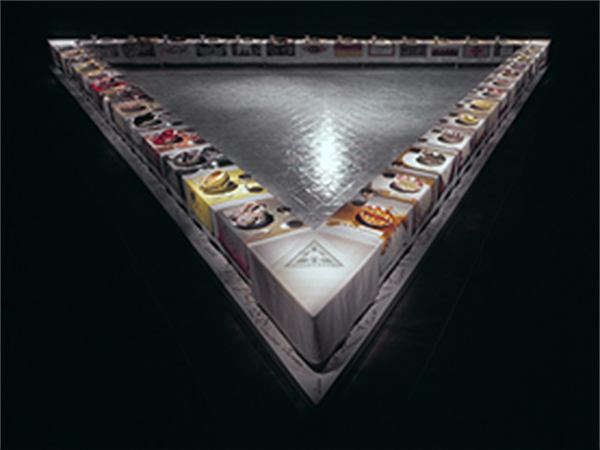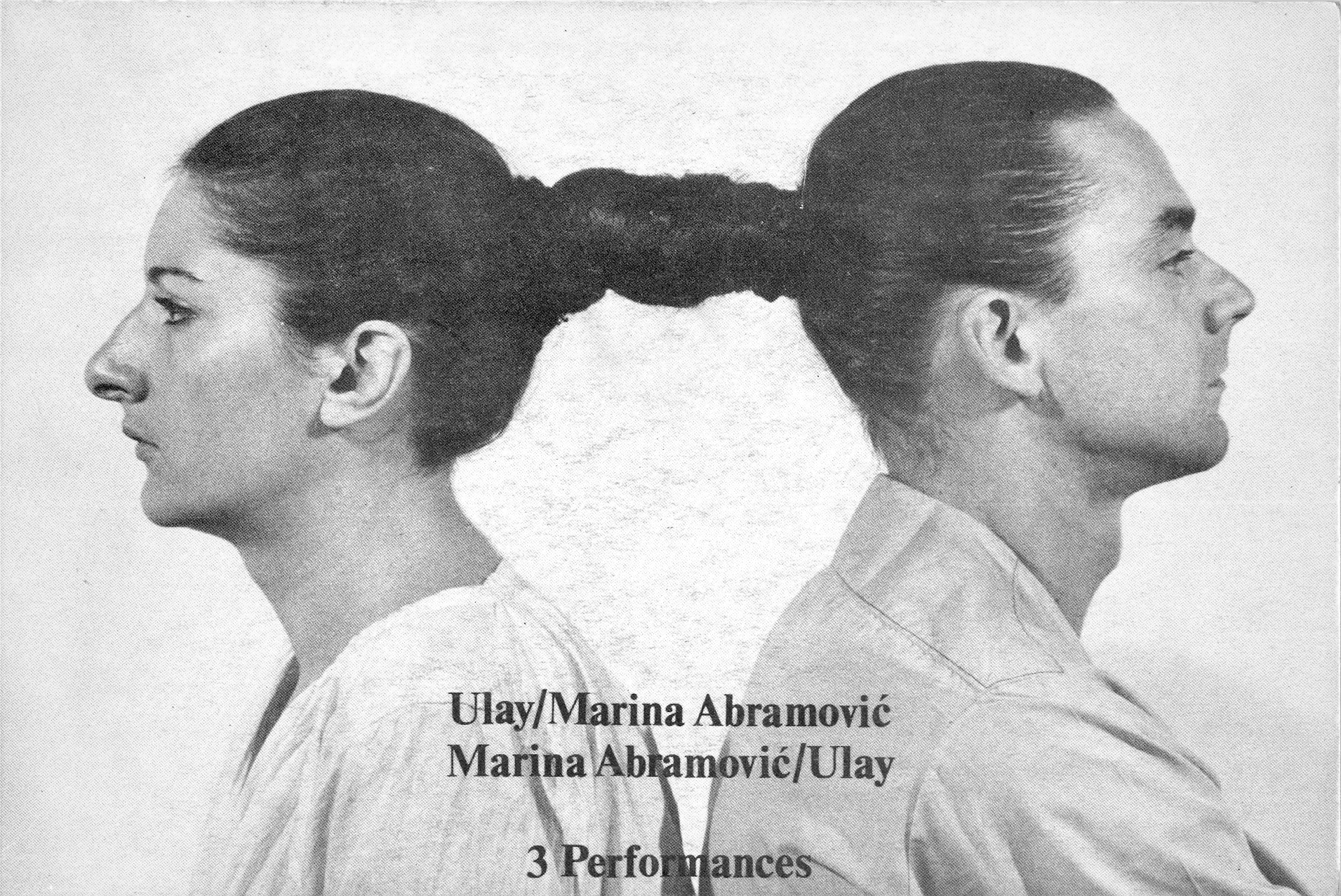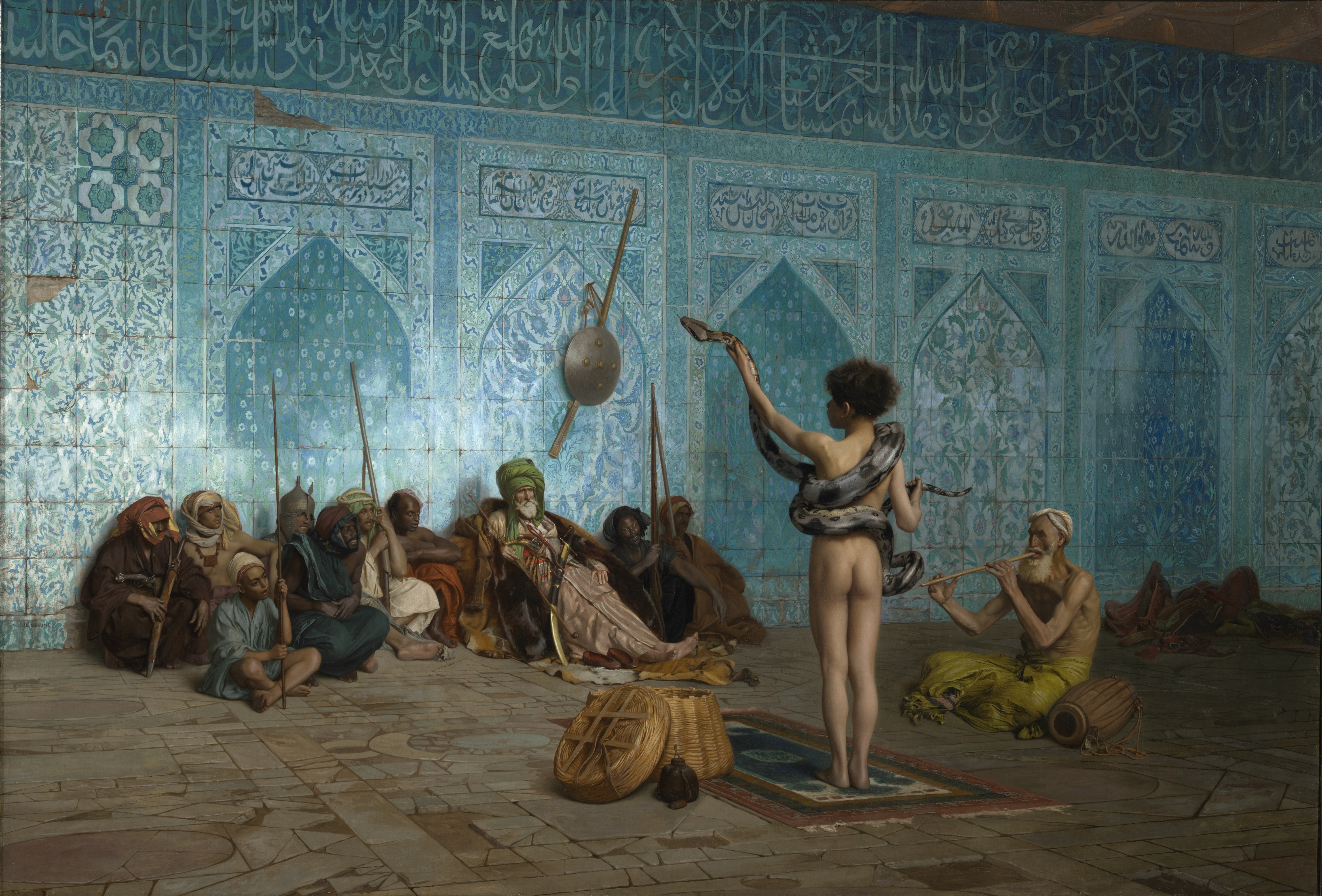|
Feminist Art Movement
The feminist art movement refers to the efforts and accomplishments of feminists internationally to produce art that reflects women's lives and experiences, as well as to change the foundation for the production and perception of contemporary art. It also sought to bring more visibility to women within art history and art practice. By the way it is expressed to visualize the inner thoughts and objectives of the feminist movement to show to everyone and give meaning in the art. It helps construct the role to those who continue to undermine the mainstream (and often masculine) narrative of the art world. Corresponding with general developments within feminism, and often including such self-organizing tactics as the consciousness-raising group, the movement began in the 1960s and flourished throughout the 1970s as an outgrowth of the so-called second wave of feminism. It has been called "the most influential international movement of any during the postwar period." History The 1960s ... [...More Info...] [...Related Items...] OR: [Wikipedia] [Google] [Baidu] |
Feminist Art
Feminist art is a category of art associated with the late 1960s and 1970s feminist movement. Feminist art highlights the societal and political differences women experience within their lives. The hopeful gain from this form of art is to bring a positive and understanding change to the world, in hope to lead to equality or liberation. Media used range from traditional art forms such as painting to more unorthodox methods such as performance art, conceptual art, body art, craftivism, video, film, and fiber art. Feminist art has served as an innovative driving force towards expanding the definition of art through the incorporation of new media and a new perspective. History Historically speaking, women artists, when they existed, have largely faded into obscurity: there is no female Michelangelo or Da Vinci equivalent. In ''Why Have There Been No Great Women Artists'' Linda Nochlin wrote, "The fault lies not in our stars, our hormones, our menstrual cycles, or our empty int ... [...More Info...] [...Related Items...] OR: [Wikipedia] [Google] [Baidu] |
The Dinner Party
''The Dinner Party'' is an installation artwork by feminist artist Judy Chicago. Widely regarded as the first epic feminist artwork, it functions as a symbolic history of women in civilization. There are 39 elaborate place settings on a triangular table for 39 mythical and historical famous women. Sacajawea, Sojourner Truth, Eleanor of Aquitaine, Empress Theodora of Byzantium, Virginia Woolf, Susan B. Anthony, and Georgia O'Keeffe are among the symbolic guests. Each place setting includes a hand-painted china plate, ceramic cutlery and chalice, and a napkin with an embroidered gold edge. Each plate, except the ones corresponding to Sojourner Truth and Ethel Smyth, depicts a brightly colored, elaborately styled vulvar form. The settings rest on intricately embroidered runners, executed in a variety of needlework styles and techniques. The table stands on ''The Heritage Floor'', made up of more than 2,000 white luster-glazed triangular tiles, each inscribed in gold scripts with t ... [...More Info...] [...Related Items...] OR: [Wikipedia] [Google] [Baidu] |
Eija-Liisa Ahtila
Eija-Liisa Ahtila (born 1959 in Hämeenlinna, Finland) is a contemporary visual artist and filmmaker who lives and works in Helsinki. Ahtila is most known for her multi-panel cinematic installations. She experiments with narrative storytelling in her films and cinematic installations. In her earlier works, she dealt with the topic of unsettling human dramas at the center of personal relationships, dealing with teenage sexuality, family relationships, mental disintegration, and death. Her later works, however, pursue more profound artistic questions where she investigates the processes of perception and attribution of meaning, at times in the light of larger cultural and existential themes, like colonialism, faith and posthumanism.http://www.av-arkki.fi/en/artists/eija-liisa-ahtila_en/ Eija-Liisa Ahtila profile at AV-arkki Ahtila has participated in numerous international art exhibitions such as Manifesta (1998), the Venice Biennale (1999 and 2005), '' documenta'' 11 (2002), ... [...More Info...] [...Related Items...] OR: [Wikipedia] [Google] [Baidu] |
Marina Abramović
Marina Abramović ( sr-Cyrl, Марина Абрамовић, ; born November 30, 1946) is a Serbian conceptual and performance artist. Her work explores body art, endurance art, feminist art, the relationship between the performer and audience, the limits of the body, and the possibilities of the mind. Being active for over four decades, Abramović refers to herself as the "grandmother of performance art". She pioneered a new notion of identity by bringing in the participation of observers, focusing on "confronting pain, blood, and physical limits of the body". In 2007, she founded the Marina Abramović Institute (MAI), a non-profit foundation for performance art. Early life, education and teaching Abramović was born in Belgrade, Serbia, then part of Yugoslavia, on November 30, 1946. In an interview, Abramović described her family as having been "Red bourgeoisie." Her great-uncle was Varnava, Serbian Patriarch of the Serbian Orthodox Church. Both of her Montenegrin-born par ... [...More Info...] [...Related Items...] OR: [Wikipedia] [Google] [Baidu] |
Linda Nochlin
Linda Nochlin (''née'' Weinberg; January 30, 1931 – October 29, 2017) was an American art historian, Lila Acheson Wallace Professor Emerita of Modern Art at New York University Institute of Fine Arts, and writer. As a prominent feminist art historian, she became well known for her pioneering 1971 article "Why Have There Been No Great Women Artists?" published by ''ARTnews''.Nochlin, Linda. "Why Have There Been No Great Women Artists?" ''ARTnews'' January 1971: 22-39, 67-71. Early life and education Linda Natalie Weinberg was born the daughter of Jules Weinberg and Elka Heller (Weinberg) in Brooklyn, New York and raised in the borough's Crown Heights neighborhood. She attended Brooklyn Ethical Cultural School, a progressive grammar school. She received her B.A. in Philosophy from Vassar College in 1951, her M.A. in English from Columbia University in 1952, and her Ph.D in the history of art from the Institute of Fine Arts at New York University in 1963. Academic career After ... [...More Info...] [...Related Items...] OR: [Wikipedia] [Google] [Baidu] |
WACK! Art And The Feminist Revolution
''WACK!: Art and the Feminist Revolution'' was an exhibition of international women's art presented at the Museum of Contemporary Art, Los Angeles from March 4–July 16, 2007. It later traveled to PS1 Contemporary Art Center, where it was on view February 17–May 12, 2008. The exhibition featured works from 120 artists and artists' groups from around the world. The 2007 exhibition catalogue—also titled ''WACK!: Art and the Feminist Revolution''—documents this first major retrospective of art and the feminist revolution. Edited by Cornelia Butler and Lisa Gabrielle Mark, it has essays by Butler, Judith Russi Kirshner, Catherine Lord, Marsha Meskimmon, Richard Meyer, Helen Molesworth, Peggy Phelan, Nelly Richard, Valerie Smith, Abigail Solomon-Godeau, and Jenni Sorkin. ''WACK!'' surveyed work by more than 120 artists in a wide variety of media, arranged by themes including Abstraction, "Autophotography," Body as Medium, Family Stories, Gender Performance, Knowledge as Po ... [...More Info...] [...Related Items...] OR: [Wikipedia] [Google] [Baidu] |
Contemporary Art
Contemporary art is the art of today, produced in the second half of the 20th century or in the 21st century. Contemporary artists work in a globally influenced, culturally diverse, and technologically advancing world. Their art is a dynamic combination of Medium (arts), materials, methods, concepts, and subjects that continue the challenging of boundaries that was already well underway in the 20th century. Diverse and eclectic, contemporary art as a whole is distinguished by the very lack of a uniform, organising principle, ideology, or "-ism". Contemporary art is part of a cultural dialogue that concerns larger contextual frameworks such as personal and cultural identity, family, community, and nationality. In vernacular English, ''modern'' and ''contemporary'' are synonyms, resulting in some conflation and confusion of the terms ''modern art'' and ''contemporary art'' by non-specialists. Scope Some define contemporary art as art produced within "our lifetime," recognising tha ... [...More Info...] [...Related Items...] OR: [Wikipedia] [Google] [Baidu] |
Australian Feminist Art Timeline
Australian feminist art timeline lists exhibitions, artists, artworks and milestones that have contributed to discussion and development of feminist art in Australia. The timeline focuses on the impact of feminism on Australian contemporary art. It was initiated by Daine Singer for ''The View From Here: 19 Perspectives on Feminism'', an exhibition and publishing project held at West Space as part of the 2010 Next Wave Festival. 1960s 1967 Exhibition: Vivienne Binns, Watters Gallery, Sydney. The exhibition of paintings and sculptures showing symbolic representations of genitalia was considered outrageous at the time. 1967 Artwork: Vivienne Binns, ''Vag dens'', synthetic polymer paint and enamel on composition board. Collection of the National Gallery of Australia, Canberra. 1967 Performance: Yoko Ono and Juno Gemes, ''The Scream'', Ono covered seated Gemes in bandages from ankle to crown while Ono performed a crescendo of screams. This performance was sabotaged by male owners ... [...More Info...] [...Related Items...] OR: [Wikipedia] [Google] [Baidu] |
Feminist Art Movement In The United States
The feminist art movement in the United States began in the early 1970s and sought to promote the study, creation, understanding and promotion of women's art. First-generation feminist artists include Judy Chicago, Miriam Schapiro, Suzanne Lacy, Judith Bernstein, Sheila de Bretteville, Mary Beth Edelson, Carolee Schneeman, Rachel Rosenthal, and many other women. They were part of the Feminist art movement in the United States in the early 1970s to develop feminist writing and art. The movement spread quickly through museum protests in both New York (May 1970) and Los Angeles (June 1971), via an early network called W.E.B. (West-East Bag) that disseminated news of feminist art activities from 1971 to 1973 in a nationally circulated newsletter, and at conferences such as the West Coast Women's Artists Conference held at California Institute of the Arts (January 21–23, 1972) and the Conference of Women in the Visual Arts, at the Corcoran School of Art in Washington, D.C. (April ... [...More Info...] [...Related Items...] OR: [Wikipedia] [Google] [Baidu] |
Postmodernism
Postmodernism is an intellectual stance or Rhetorical modes, mode of discourseNuyen, A.T., 1992. The Role of Rhetorical Devices in Postmodernist Discourse. Philosophy & Rhetoric, pp.183–194. characterized by philosophical skepticism, skepticism toward the "meta-narrative, grand narratives" of modernism, opposition to epistemological, epistemic certainty or stability of meaning (semiotics), meaning, and emphasis on ideology as a means of maintaining political power. Claims to objective fact are dismissed as naïve realism, with attention drawn to the instrumental conditionality, conditional nature of knowledge claims within particular historical, political, and cultural discourses. The postmodern outlook is characterized by self-reference, self-referentiality, epistemological relativism, moral relativism, pluralism (philosophy), pluralism, irony, irreverence, and eclecticism; it rejects the "universal validity" of binary oppositions, stable identity (philosophy), identity, hierar ... [...More Info...] [...Related Items...] OR: [Wikipedia] [Google] [Baidu] |
Museum Of Modern Art
The Museum of Modern Art (MoMA) is an art museum located in Midtown Manhattan, New York City, on 53rd Street between Fifth and Sixth Avenues. It plays a major role in developing and collecting modern art, and is often identified as one of the largest and most influential museums of modern art in the world. MoMA's collection offers an overview of modern and contemporary art, including works of architecture and design, drawing, painting, sculpture, photography, prints, illustrated and artist's books, film, and electronic media. The MoMA Library includes about 300,000 books and exhibition catalogs, more than 1,000 periodical titles, and more than 40,000 files of ephemera about individual artists and groups. The archives hold primary source material related to the history of modern and contemporary art. It attracted 1,160,686 visitors in 2021, an increase of 64% from 2020. It ranked 15th on the list of most visited art museums in the world in 2021.'' The Art Newspaper'' an ... [...More Info...] [...Related Items...] OR: [Wikipedia] [Google] [Baidu] |
Panayiotis Vassilakis
Panayiotis Vassilakis ( el, Παναγιώτης Βασιλάκης; 29 October 1925 – 9 August 2019), also known as Takis ( el, Τάκις), was a self-taught Greek artist known for his kinetic sculptures. He exhibited his artworks in Europe and the United States. Popular in France, his works can be found in public locations in and around Paris, as well as at the Athens-based Takis Foundation Research Center for the Arts and Sciences. Early life Takis was born in 1925 in Athens. Because of the previous Greco-Turkish War, his family struggled financially. His childhood and teen years were also shadowed by war. World War II brought along the Axis Occupation of Greece which was in effect from 1941 until October 1944, and this was then followed by the Greek Civil War from 1946 to 1949. During these, Takis kept his focus on his artwork, although his family did not approve. Career Takis' artistic career started when he was around 20 years old in a basement workshop. This is wh ... [...More Info...] [...Related Items...] OR: [Wikipedia] [Google] [Baidu] |






